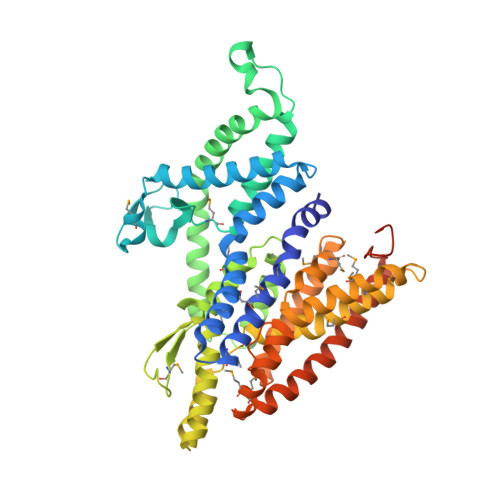The Structure of a Sugar Transporter of the Glucose EIIC Superfamily Provides Insight into the Elevator Mechanism of Membrane Transport.
McCoy, J.G., Ren, Z., Stanevich, V., Lee, J., Mitra, S., Levin, E.J., Poget, S., Quick, M., Im, W., Zhou, M.(2016) Structure 24: 956-964
- PubMed: 27161976
- DOI: https://doi.org/10.1016/j.str.2016.04.003
- Primary Citation of Related Structures:
5IWS - PubMed Abstract:
The phosphoenolpyruvate:carbohydrate phosphotransferase systems are found in bacteria, where they play central roles in sugar uptake and regulation of cellular uptake processes. Little is known about how the membrane-embedded components (EIICs) selectively mediate the passage of carbohydrates across the membrane. Here we report the functional characterization and 2.55-Å resolution structure of a maltose transporter, bcMalT, belonging to the glucose superfamily of EIIC transporters. bcMalT crystallized in an outward-facing occluded conformation, in contrast to the structure of another glucose superfamily EIIC, bcChbC, which crystallized in an inward-facing occluded conformation. The structures differ in the position of a structurally conserved substrate-binding domain that is suggested to play a central role in sugar transport. In addition, molecular dynamics simulations suggest a potential pathway for substrate entry from the periplasm into the bcMalT substrate-binding site. These results provide a mechanistic framework for understanding substrate recognition and translocation for the glucose superfamily EIIC transporters.
Organizational Affiliation:
Verna and Marrs McLean Department of Biochemistry and Molecular Biology, Baylor College of Medicine, 1 Baylor Plaza, Houston, TX 77030, USA.

















